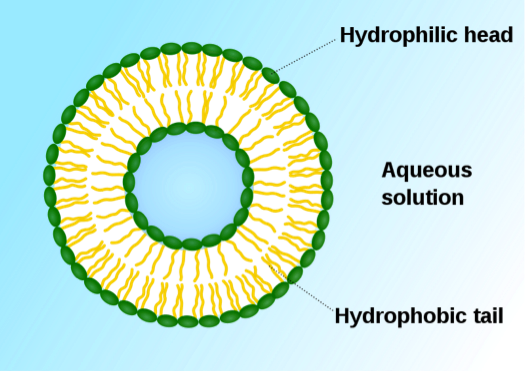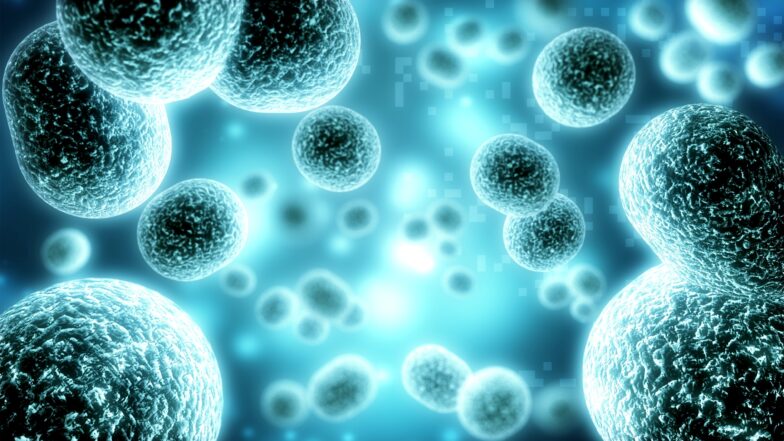Artificial Life: Ready or Not Here It Comes
A number of scientists are trying to create life in the lab, specifically artificial cells.
They hope these synthetic cells will provide useful biomedical and biotechnology applications. They also hope the manufacture of these cells will shed light on the origin of life question. Many scientists conclude that once life is made in the lab, it will demonstrate two things: (1) that there is nothing special about life in general and; (2) that it is much more realistic to believe chemical evolution could generate Earth’s first life-forms. New work by a Japanese research team brings scientists closer to making artificial life in the laboratory. But careful analysis of this work reveals the opposite conclusion—life cannot originate without an intelligent agent.
“Ready or not, here I come” is the familiar cry of children playing hide-and-seek. It also describes the reality of synthetic biology, the discipline focused on creating artificial life in the lab.
Given the complexity of even the simplest cell, many people struggle to believe scientists could ever generate life. Yet researchers are close to generating artificial cells in the laboratory—and with this feat come many questions and concerns. Ready or not, here it comes.
Many researchers believe creating protocells will shed light on the origin-of-life question by providing evidence for an evolutionary explanation for life’s origin. New work by researchers from Japan brings synthetic biologists one step closer to the laboratory assembly of protocells with life-like properties.1 Careful examination of this latest attempt to create artificial cells indicates, ironically, that apart from the work of intelligent agents, life cannot come into being.
Synthetic Biology and the Bottom-Up Approach to Artificial Cells
Some synthetic biologists attempt to create artificial cells with the so-called bottom-up approach. These scientists begin with simple molecules, using them as building blocks, and combine them into increasingly complex arrangements until a supramolecular complex (called a protocell) results—a system that bears many of life’s properties and characteristics.
Progress to Date
As I detail in my book Creating Life in the Lab, researchers have made remarkable progress toward producing protocells with life-like properties. For example, researchers have generated from fatty acids, vesicles (hollow spherical structures) that can grow and divide. Growth is achieved by adding more fatty acids to the vesicles once they have formed initially. These added materials incorporate into the vesicle walls and cause the spherical structures to increase in size. At some point the vesicles’ increased size leads to instability, leading to fissure and division into daughter vesicles.

Researchers have also successfully encapsulated materials within the vesicles’ interiors, including DNA and RNA. By incorporating enzymes or other catalysts into the vesicle interiors, along with these information-rich molecules, researchers have been able to direct RNA and DNA synthesis, simulating the molecular process that forms the basis for replication of genetic information.
Taking the Next Step
Up until this point, researchers have failed to link the growth and replication of vesicles to the replication of encapsulated DNA or RNA. But now, for the first time, a team of Japanese researchers has accomplished this feat. These investigators developed artificial vesicle-forming materials as analogs to fatty acids. One difference is that fatty acids are negatively charged while the vesicle-forming materials employed by the Japanese team possess a positive charge. This property in the artificial materials turns out to be the key.
The scientists encapsulated within the vesicles pieces of DNA and the enzymes needed for the polymerase chain reaction (PCR)—a process that can replicate DNA and amplify the number of copies. The researchers showed that when the entrapped DNA was replicated via the PCR, it dramatically promoted the growth and division of the vesicles. It appears DNA and vesicle replication can couple because of the interaction between the negatively charged DNA and the positively charged vesicle components. This interaction promotes incorporation of newly generated vesicle components into the walls of these spherical structures and initiates the fissuring of the growing vesicles.
This advance represents a significant step toward the generation of protocells with the properties of life. But does it make the evolutionary explanation for the origin of life more reasonable?
Synthetic Biology, Chemical Evolution, and Intelligent Design
Ironically, studies like the latest one conducted by the Japanese researchers support the case for intelligent design, rather than the case for chemical evolution.
The coupling of vesicle growth and replication with DNA replication and amplification required a team of highly trained chemists with detailed knowledge of physics, chemistry, and biochemistry. These researchers employed a sophisticated strategy, carefully designed protocols, and precise laboratory manipulations to generate the replicating vesicles.
Specifically, the investigators had to:
- • Carefully design, then synthesize the vesicle-forming compound
- • Carefully add other vesicle-forming components to optimize the vesicle properties so they possess a large enough internal volume and stability in high ionic-strength environments and high temperature conditions needed for the PCR process to operate
- • Carefully manipulate the system according to tightly controlled laboratory protocols to carry out the encapsulation and amplification processes and to provide additional vesicle-forming materials to drive vesicle growth
In other words, intelligent agents were required to make these experiments successful.
Endnotes
- Kensuke Kurihara et al., “Self-Reproduction of Supramolecular Giant Vesicles Combined with the Amplification of Encapsulated DNA,” Nature Chemistry 3 (September 4, 2011): 775–81.






